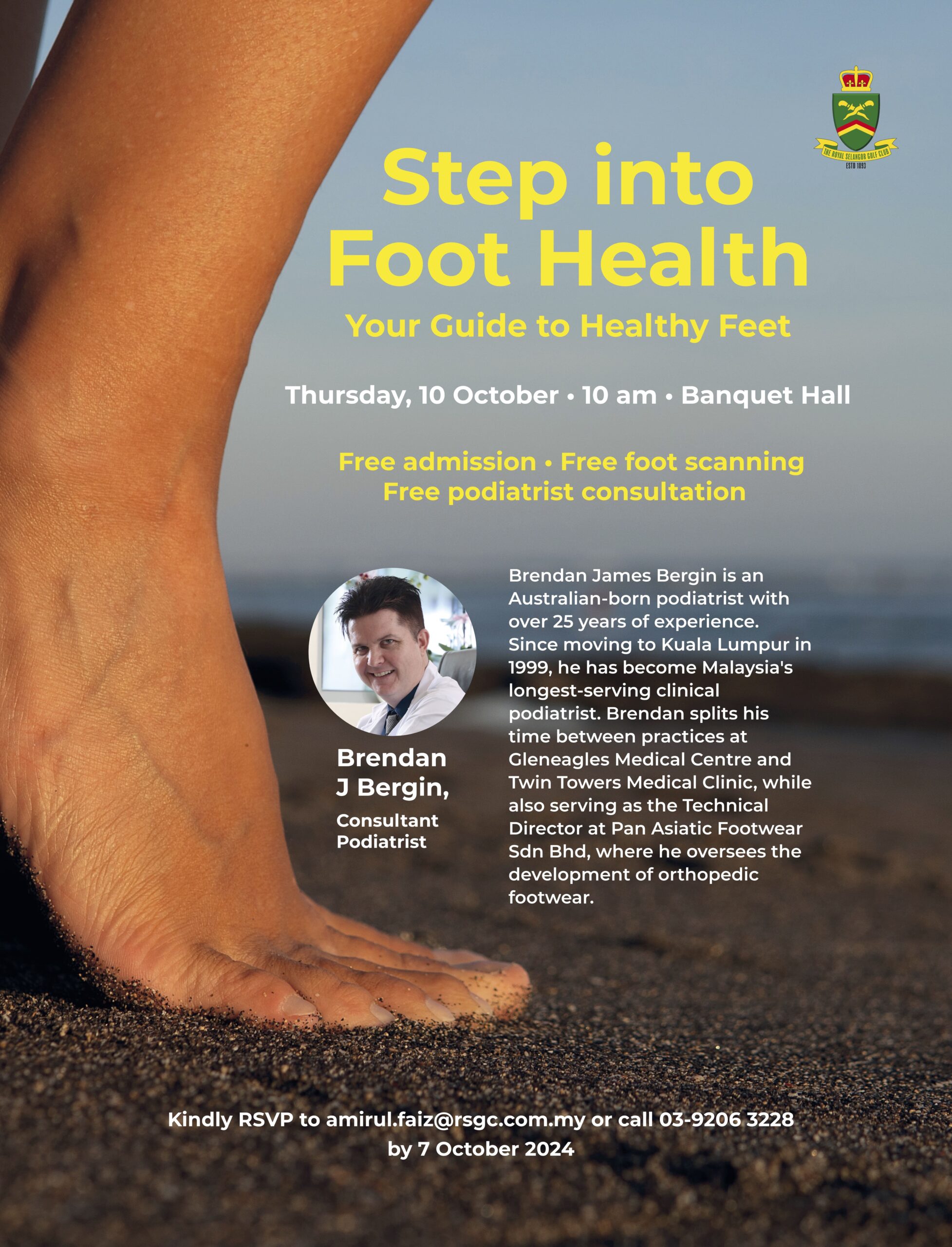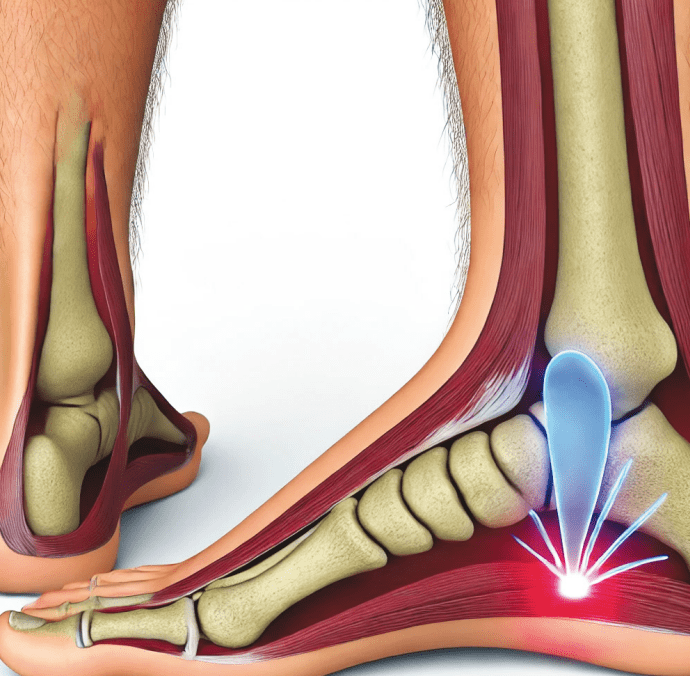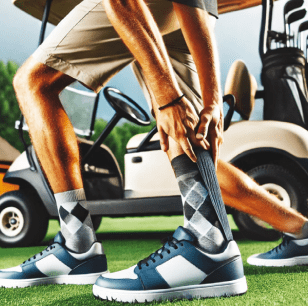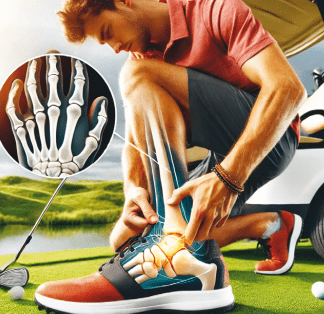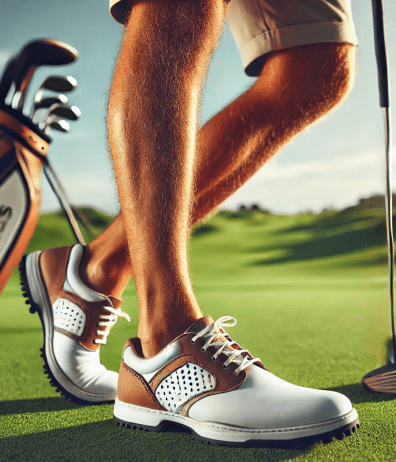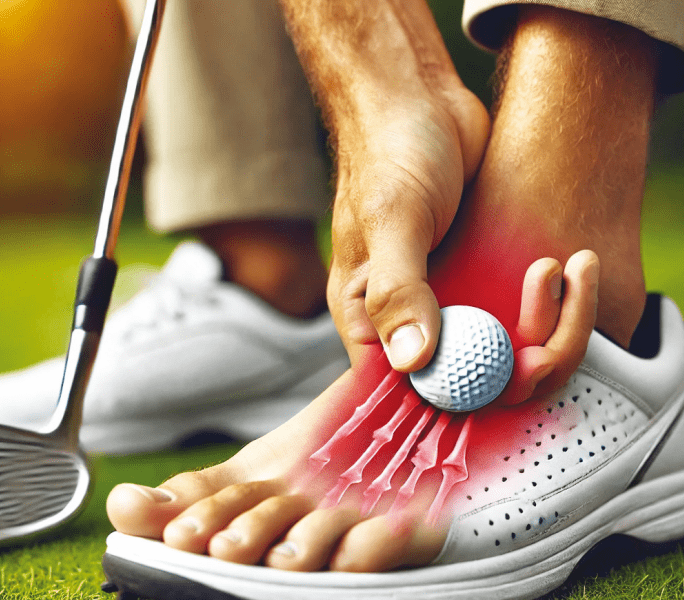Golfing can be said to be more than just a sport, whilst it requires intense physical exertion and stamina, it also emphasizes precision and technique, employing complex rotational movements of every major joint group in the body. Golfers typically encounter a range of foot and ankle problems due to the repetitive nature of the game, the need for stability during swings, and the varying terrain of golf courses. Podiatrists encounter a number of these issues in routine practice, and today we will outline some common foot and ankle issues faced by golfers, their causes, symptoms, and preventive measures.
The plantar fascia in the foot, highlighting the heel area where plantar fasciitis pain typically occurs
1. Plantar Fasciitis
Starting with what is probably the most common foot issue, Plantar fasciitis is also one of the most prevalent foot problems among golfers. It involves inflammation of the plantar fascia, a thick band of tissue running across the bottom of the foot from the heel to the toes. The condition often results from excessive strain due to poor footwear, excessive walking on hard surfaces, or repetitive stress from swinging the club. Golfers who spend long hours walking the course or have improper gait mechanics are particularly at risk.
The primary symptom is a sharp pain in the heel, especially noticeable with the first steps in the morning or after prolonged periods of rest. The pain may lessen with activity but can return after extensive walking or standing. Wearing supportive golf shoes with good arch support, using custom orthotics, and incorporating stretching exercises for the Achilles tendon and plantar fascia can help prevent and alleviate symptoms. In severe cases, physical therapy or corticosteroid injections might be necessary.
A golfer stretching their calf muscles against a golf cart
2. Achilles Tendinitis
Achilles tendinitis is an inflammation of the Achilles tendon, which connects the calf muscles to the heel bone. It’s a common issue for golfers who engage in sudden bursts of activity or have poor foot mechanics. Repetitive stress from the golf swing and walking on varied terrain can strain the Achilles tendon. Insufficient warmup and overuse can exacerbate the problem.
Symptoms include pain and stiffness along the back of the ankle, particularly after activity. The pain may become more persistent and worsen with continued stress on the tendon.
To prevent Achilles tendinitis, golfers should engage in proper warm-up exercises, gradually increase activity levels, and use supportive footwear. Treatment typically involves rest, ice application, stretching exercises, and in some cases, physical therapy or anti-inflammatory medications.
A golfer on uneven terrain twisting their ankle during a swing, demonstrating how ankle sprains can occur
3. Ankle Sprains
Ankle sprains occur when the ligaments in the ankle are stretched or torn, usually due to an inversion or eversion injury.
Golfers may sprain their ankles by twisting or turning awkwardly during their swing or stepping on uneven terrain. Poorly maintained golf course surfaces and sudden changes in direction can also contribute.
Symptoms of an ankle sprain include pain, swelling, bruising, and difficulty bearing weight on the affected foot.
Wearing supportive golf shoes with proper ankle support can help prevent sprains. Strengthening exercises for the ankle and being cautious on uneven surfaces are also beneficial. Treatment includes R.I.C.E. (rest, ice, compression, elevation), followed by rehabilitation exercises to restore strength and flexibility.
A golfer adjusting or examining the ball of their foot, possibly with an inset showing the metatarsal bones, to illustrate metatarsalgia
4. Metatarsalgia
Metatarsalgia is characterized by pain and inflammation in the ball of the foot, often affecting the metatarsal bones. This condition can result from excessive pressure on the forefoot during the golf swing, particularly if the golfer has improper weight distribution or wears unsupportive shoes.
Pain in the ball of the foot, which may worsen with activity and improve with rest, is typical. There may also be a sensation of burning or numbness.
Using well-cushioned golf shoes and orthotic insoles can help distribute pressure more evenly. Stretching and strengthening exercises for the foot muscles, as well as avoiding activities that exacerbate the pain, can provide relief.
A golfer’s feet in well-fitted golf shoes on a golf course
5. Bunions
Bunions are bony bumps that form at the base of the big toe, causing the toe to angle inward.
Poorly fitting golf shoes, particularly those that are too tight or have a narrow toe box, can contribute to the development of bunions. Repetitive stress and abnormal foot mechanics are also factors.
Symptoms include a visible bump on the foot, pain, swelling, and difficulty finding comfortable footwear.
Choosing properly fitting golf shoes with a wide toe box and using orthotic inserts can help prevent bunions. Treatment options include wearing bunion pads, using ice to reduce inflammation, and in severe cases, surgical intervention.
A foot with a visible bunion, alongside a pair of ill-fitting golf shoes to highlight the cause of the condition
6. Morton’s Neuroma
Morton’s neuroma is a thickening of the nerve tissue between the toes, usually between the third and fourth toes. This condition is often caused by wearing tight or poorly cushioned golf shoes that compress the toes and increase pressure on the nerve. Repetitive stress from the golf swing can also be a contributing factor.
It generally presents as a sharp, burning pain in the ball of the foot, tingling, or a feeling of having a pebble in the shoe.
To prevent Morton’s neuroma, opt for golf shoes with a wide toe box and adequate cushioning. Treatment often involves rest, changing footwear, using arch supports, and, in some cases, corticosteroid injections or other surgical options.
Foot and ankle problems can significantly impact a golfer’s performance and enjoyment of the game. By understanding these common issues and implementing preventive measures such as proper footwear, stretching exercises, and strength training, golfers can reduce their risk of injury and continue to play comfortably. The usage of prescription or non-prescription corrective foot orthoses can also make a major difference in the management and correction of these problems, and should always be considered as preventative therapy prior to the onset of symptoms. And of course, as always, regular consultation with a podiatrist or other healthcare professional can also help manage any ongoing issues and ensure that golfers maintain optimal foot and ankle health, and play a better game.
A golfer rubbing the ball of their foot, indicating discomfort or pain, with a focus on the area between the third and fourth toes
About the Author
Brendan James Bergin is an Australianborn podiatrist who has been in practice since 1996, having trained at QUT in Brisbane, and holding various interstate positions in Tasmania, Victoria, and Queensland. He was invited to Kuala Lumpur in 1999 to establish a local podiatry presence, and has since found Malaysia a good fit professionally and personally, becoming Malaysia’s longestserving clinical podiatrist. Brendan divides his time between two very busy practices in Gleneagles Medical Centre, Ampang, and Twin Towers Medical Clinic, KLCC. Since 2018, he has held the position of Technical Director with Pan Asiatic Footwear Sdn Bhd, the manufacturers of PedaHeel orthopedic footwear, and currently oversees and participates in new product development and design for the company


